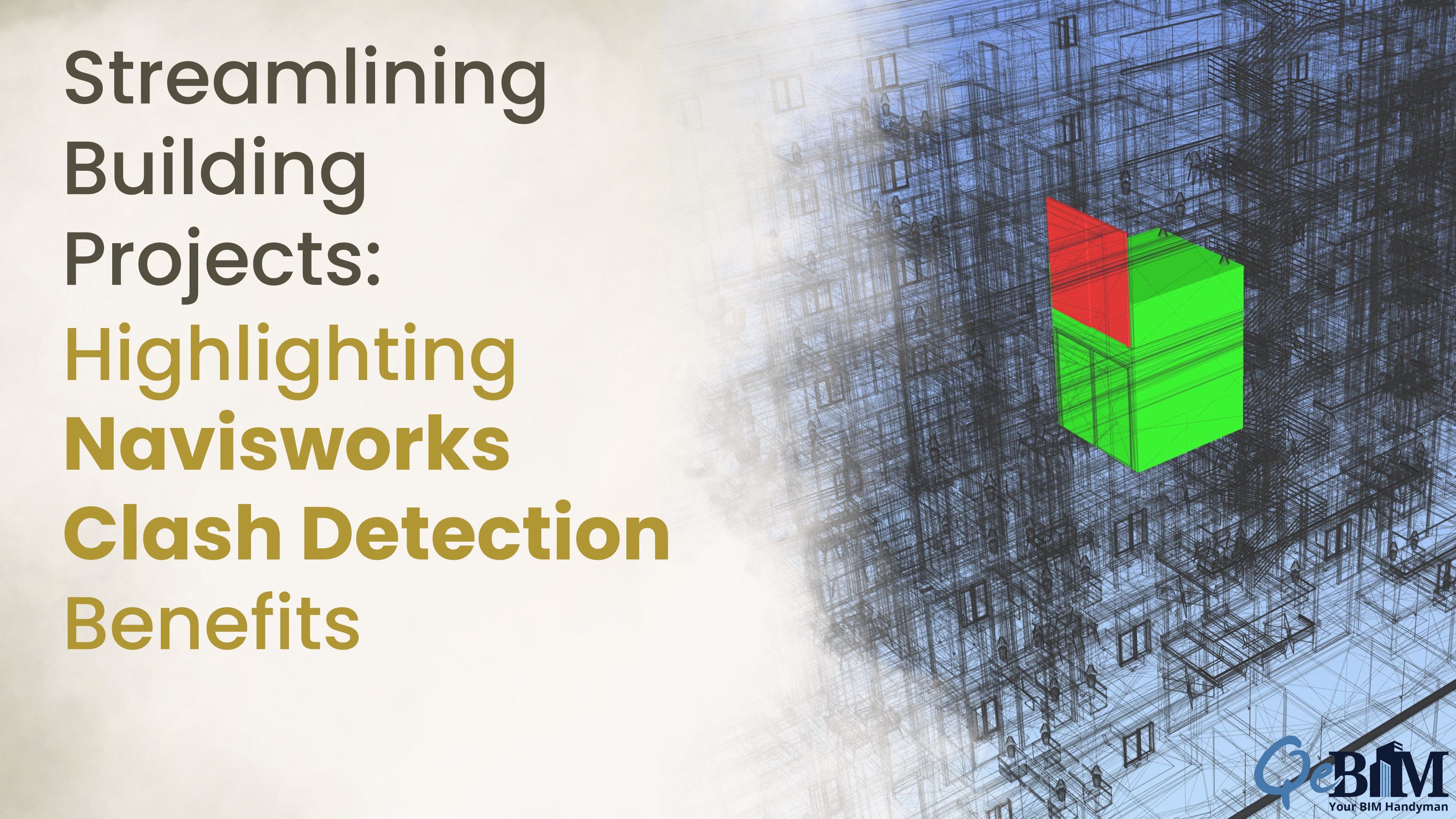Streamlining Building Projects: Highlighting Navisworks Clash Detection Benefits

Introduction
In the sphere of MEP (Mechanical, Electrical, and Plumbing) BIM (Building Information Modelling) services, clash detection is a crucial procedure. Prior to the start of construction, it entails finding and fixing disputes or collisions among different structures or parts. Conflict identification improves project coordination, prevents costly and laborious rework, and guarantees an effortless building procedure. Navisworks constitutes one of the effective tools utilized in conflict detection. We are going to look at the many advantages that Navisworks offers whenever it pertains to Clash Detection Services in MEP BIM services during this article.
What is Navisworks?
Autodesk’s Navisworks is a potent software program that is frequently utilized in the construction and engineering sectors. It is an essential tool in MEP BIM Services because of its enhanced capabilities for detecting collisions, project management, and visualization.
The capacity of Navisworks to seamlessly integrate as well as merge models from numerous fields, including architectural, structural, and MEP, throughout an all-encompassing integrated model, represents one of the software’s primary advantages. This combination enables better coordination and visualization, giving a comprehensive perspective of the construction endeavor and making it possible to spot disputes or collisions amongst different structures or elements.
Proactive clash detection is made easier by Navisworks, which assists team members in finding and resolving conflicts prior to their arising on-site. Possible disputes might be tackled throughout the planning phase, reducing threats and averting costly revisions throughout the building stage, by modeling collisions in a simulated setting.
Additionally, Navisworks offers reliable clash detection algorithms that, using pre-established principles, immediately recognize clashes. It provides methods for effectively handling and settling conflicts, encouraging cooperative collaboration amongst various parties.
Benefits of Navisworks
- Enhanced Visualization and Coordination
For conflict detection, Navisworks offers a comprehensive and aesthetically stimulating environment. In order to create a single integrated model, MEP specialists can merge models from several disciplines, such as architectural, structural, and MEP. Navisworks makes it possible to visualize how various systems relate to each other by combining these representations. - Early Clash Detection and Risk Mitigation
MEP specialists can spot clashes promptly thanks to Navisworks’ early clash detection feature. Early identification reduces hazards and avoids costly revisions throughout the construction stage. Prospective disputes might be found early and promptly handled by simulating confrontations in a simulated setting. This anticipatory approach reduces interruptions, maximizes resource use, and boosts the efficiency of projects in general.
When it comes to complicated projects like major commercial structures, hospitals, or manufacturing facilities, Navisworks is very useful for clash detection. These initiatives frequently entail complex MEP systems, major collaboration difficulties, and many different parties involved. Massive and intricate models may be handled by Navisworks with ease, allowing for precise conflict detection and expedited coordination across these projects. - Quantification of Clash Impact
Despite just noting conflicts, Navisworks additionally offers insightful data regarding how conflicts affect the project. It makes it possible to quantify collision quantities, degree of severity, and prioritization. Project teams may prioritize conflicts based on how significant they are and spend resources correspondingly thanks to such assessment. Project teams might enhance the preparation and execution of their projects by making educated decisions by analyzing the extent and impact of disputes. - Time and Cost Savings
The clash detection procedure is streamlined by Navisworks, which saves a lot of time as well as funds. Navisworks reduces the requirement for manual clash verification, which may be arduous as well as laborious, with their automatic clash detection methods. Navisworks avoid costly repairs and revisions throughout the building stage by identifying incompatibilities earlier on. It facilitates quicker problem-solving, reduces delays in projects, and increases overall project effectiveness, all of which result in lower expenses. - Improved Collaboration and Communication
The use of Navisworks improves stakeholder collaboration and communication. It enables the fusion of several models across different fields of study, promoting transdisciplinary coordination. MEP specialists may communicate clash reports, annotated models, and project data with multiple teams, contractors, and clients using Navisworks. As a result, communication is increased, misconceptions are reduced, and productive teamwork is encouraged during the course of the project. - Integration with Other Software
Its capabilities are boosted even more by Navisworks’ easy integration with other BIM software and design tools. Models might be imported using programs including Autodesk Revit, AutoCAD, and other well-known designing programs. The uninterrupted transfer of information amongst various software systems is made possible by this interoperability, which guarantees a smooth workflow and minimizes data conversion problems.
Conclusion
Throughout MEP BIM services, Navisworks is essential to the Clash Detection process. Navisworks demonstrates why it is an essential tool for MEP experts by offering improved visualization, earlier conflict detection, effective clash resolution, assessment of clash impact, time and expense cash reserves, greater collaboration, and compatibility with additional resources. Its beneficial characteristics enable project teams to locate and overcome conflicts, improve project collaboration, and guarantee the project’s achievement.